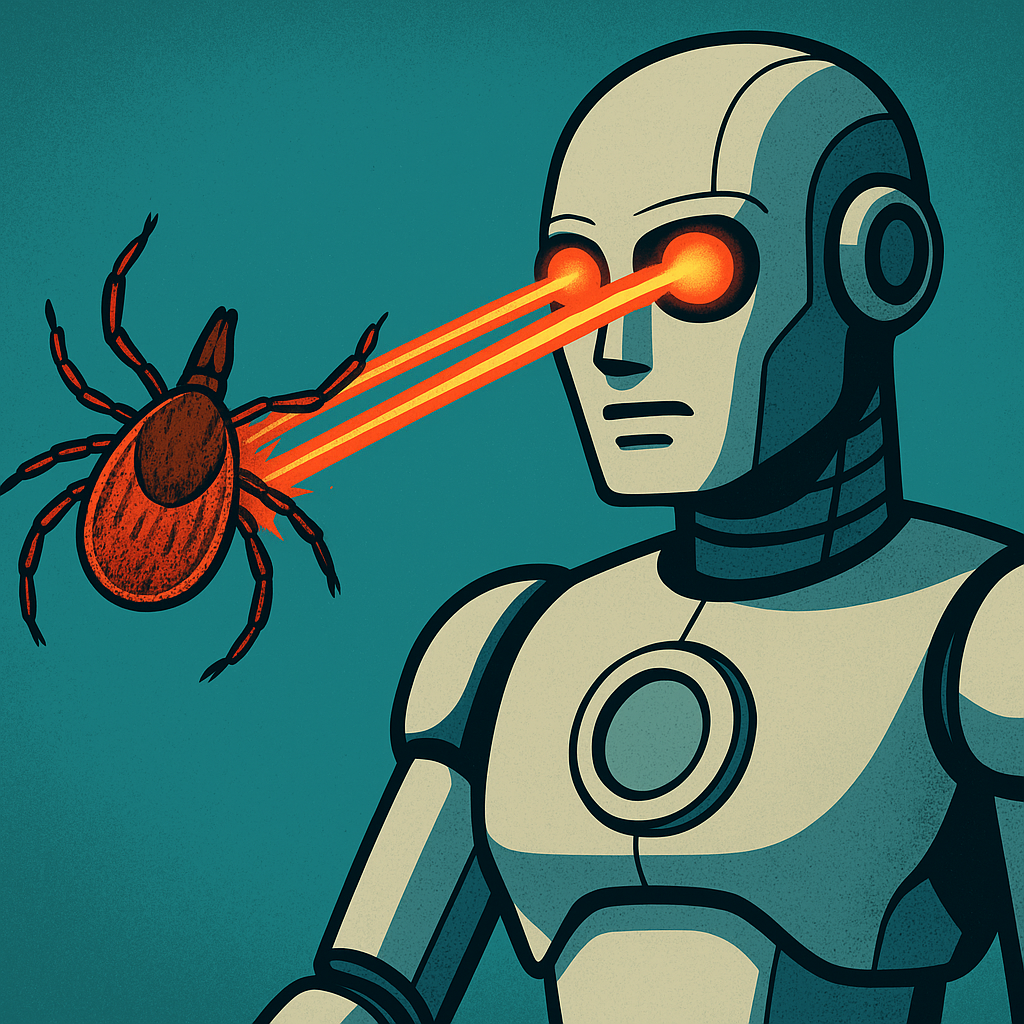Researchers have revealed a new artificial intelligence–powered blood test that detects Lyme disease earlier and more accurately than current methods.
The unveiling happened during the Association for Diagnostics & Laboratory Medicine (ADLM) 2025 meeting in Chicago. One introduces a promising new AI-assisted blood test for Lyme disease. The other explores how generative AI tools can help adolescents better access and understand medical information.
Every year, more than 475,000 Americans are diagnosed with Lyme disease—a number expected to rise as climate change expands tick habitats. When treated early, Lyme usually responds well to antibiotics. However, the current standard test, called two-tier serology, detects early-stage Lyme accurately in only 30 per cent of cases.
This shortfall leads to many missed opportunities for timely treatment. More than half of those not diagnosed or treated in the early weeks may suffer long-term effects. These effects include fatigue, joint pain, and cognitive impairment.
The new blood test, developed by ACES Diagnostics under the direction of microbiologist Holly Ahern, offers a significant improvement. It builds on research using rhesus macaques, whose immune response closely mirrors that of humans.
Unlike the standard method, which may involve multiple rounds of testing, this single-panel test searches for 10 specific antigens in one procedure.
It uses a machine-learning algorithm to analyze the immune response, detecting patterns unique to each individual.
“You and I might get infected by the same bacteria, but we might both produce different antibody responses to it,” said Ahern.
“With these antigens matched with a decision-tree–based classifier, we can actually pick that up in each individual case.”
Read more: Breath Diagnostics leader speaks at lung cancer education event in Louisville
Read more: Breath Diagnostics gives the public the chance to join the fight against cancer
The test is cost-effective
Researchers tested the method on blood samples from 123 Lyme disease patients and 197 uninfected individuals. The test achieved sensitivity and specificity levels above 90 per cent. This translates to nine out of ten patients receiving an accurate diagnosis and timely treatment.
According to Ahern, the test is cost-effective, works on standard lab equipment, and could be available commercially by late 2026.
In another study, researchers assessed the impact of Medicine-GPT, a free-to-use, doctor-developed version of ChatGPT tailored for clinical accuracy. The focus was on adolescents, who are frequent users of technology and often search for health information online, especially on topics they hesitate to discuss with adults.
Led by Jin and team, researchers collected over 100 medical questions from Reddit’s “Ask Doctors” forum, specifically from users aged 10 to 19. They evaluated how Medicine-GPT performed compared to ChatGPT-4 across measures such as factual accuracy, completeness, reasoning, and helpfulness.
Both models were factually accurate. However, Medicine-GPT significantly outperformed ChatGPT-4 in all other areas. It scored 66.6 per cent for completeness, 60 per cent for reasoning, and 46.6 per cent for helpfulness.
By comparison, ChatGPT-4 scored 20 per cent, 33.3 per cent, and 23.3 per cent, respectively. Medicine-GPT also received higher clarity ratings. Still, researchers identified a key issue: adolescents may feel overwhelmed when AI models list rare and life-threatening conditions as possible diagnoses.
“This highlights the need for future AI tools to not only be medically accurate, but also context-aware, user-sensitive, and aligned with how clinicians communicate,” said Jin.
Rather than discouraging use, he recommends that providers guide teens in using AI responsibly, reinforcing that it should never replace professional medical advice.
Read more: Breath Diagnostics opens Respiratory Innovation Summit with captivating presentation
Read more: Breath Diagnostics now offering a compelling investment opportunity
One Breath identifies lung cancer through patient’s breath
The potential of AI in diagnostics extends beyond Lyme disease and adolescent health education. Several companies are now leveraging AI to detect diseases earlier and more accurately.
Breath Diagnostics, based in Louisville, has developed One Breath, a tool that identifies lung cancer through compounds in a patient’s breath. The system uses machine learning to analyze volatile organic compounds (VOCs), which shift in composition when cancer is present. Because these changes are difficult to detect with traditional tools, One Breath can catch early-stage cancer non-invasively, improving treatment outcomes and avoiding unnecessary biopsies.
Boston-based PathAI is also making advances. Its AI-driven pathology platform assists doctors by analyzing tissue samples for signs of cancer. The software can highlight suspicious regions in breast or prostate biopsies, reducing human error and increasing consistency in diagnosis. This technology supports overburdened pathology labs and improves accuracy in high-stakes situations.
The presentations at ADLM 2025 signal a shift in how AI is being integrated into healthcare. The Lyme test represents a leap forward in diagnostic accuracy, while tools like Medicine-GPT give adolescents access to medically sound information in ways that feel approachable. Meanwhile, companies such as Breath Diagnostics and PathAI show that AI is already making tangible progress across various disease areas. As this technology evolves, success will depend on striking a careful balance between innovation, accessibility, and compassion.













